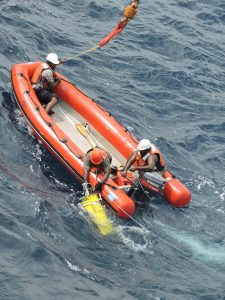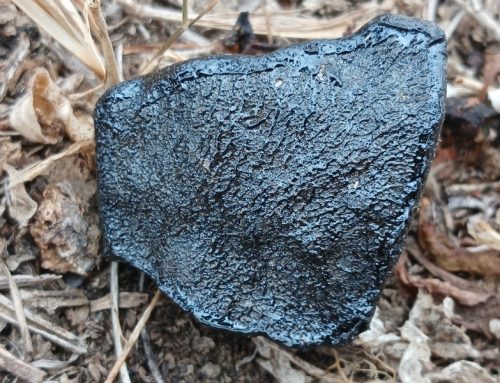 “India is rapidly gearing up its blue economy and its ocean sciences research,” says Hyderabad-based Dr Satheesh Shenoi, director of the Indian National Centre for Ocean Information Services, and co-chairperson of the IIOE-2 steering committee.
“India is rapidly gearing up its blue economy and its ocean sciences research,” says Hyderabad-based Dr Satheesh Shenoi, director of the Indian National Centre for Ocean Information Services, and co-chairperson of the IIOE-2 steering committee.
“We are building more ports and harbours so that many more goods can be transported by ship, which is far more cost effective, with fewer carbon emissions. India is also looking at the resources in the oceans, including oil and gas and potential medicines. We recognise the critical role of our oceans in climate change, and are investing substantially in ocean research and ocean observation.
Monsoon winds
Sailors in the Indian Ocean have always known that the monsoon wind pattern changes twice a year, but investment in research into these winds and the many complex dynamics of the Indian Ocean is only fairly recent. With the Indian Ocean warming faster than any of the world’s other oceans, the IIOE-2 is very much part of the shift towards conducting scientific research in the region.
“The International Panel on Climate Change (IPCC) report published a few years back, showed that in two decades, ±93% of the excess heat that has gone into earth systems has gone into the ocean; the remainder has gone into the atmosphere and into melting the glaciers,” says Shenoi.
Why the Indian Ocean is warming
Shenoi suggests two possible explanations for Indian Ocean warming that require further research:
- The Indonesian throughflow from the Pacific has increased, bringing more of its warm water into the Indian Ocean.
- The westerly winds over the equatorial Indian Ocean are becoming stronger, strengthening the downwelling conditions, and leading to the warming of the upper ocean.
Over 40% of the world’s population lives in countries prone to cyclones, flooding and droughts along the Indian Ocean, so it is important to understand how the climate affects the people and their livelihoods.
A key question is how Indian Ocean warming influences the monsoons. “We don’t know the answer to this yet,” Shenoi replies. “Some of the published research indicates that warming is happening more at the subsurface layers, in which case it won’t immediately affect the atmosphere; but is it a matter of time before the ocean transfers the heat to the surface? Increased surface temperature is certain to affect the African and Asian monsoons; the entire regional pattern could change, with either increased or decreased rains. All this will directly impact the Indian Ocean populations and their livelihoods.”
Macroeconomic level – looking to the ocean
At a macroeconomic level, India is a major importer of oil and it is looking to the ocean for an alternative, with the discovery of solidified methane gas deposits on the ocean floor.
“India is one of the pioneer investors in future ocean technology, but it might take another decade to develop the technology to extract these deposits without losing the methane,” Shenoi explains. “Another example is the technology required to mine the deposits of manganese, zinc, cobalt and several other metals at a depth of about 500 metres in the central Indian Ocean.
“India has completed the mapping of this region and made a quantity assessment but it is a question of how sustainably, safely and economically you can mine it. These metals are used to make alloys for many purposes – from engineering to technology. Assessments predict that these will run out on land in about 30 years, so these ocean deposits will become a critical resource. In all forms of ocean management – from conservation to mining – we need to think several decades ahead. It’s a very short period of time in the greater scheme of things.”
Interconnected Ocean Power and its Influence on the Earth’s rotation
Massive exchanges of water between the Pacific and Indian Oceans emphasise the interconnectivity of the world’s oceans, with significant climate-related implications.
Dr Satheesh Shenoi was part of a group of scientists from France and INCOIS working on this research. Their findings were published in April 2019 in the journal Nature Communications, in a paper titled: “Basin-wide sea level coherency in the tropical Indian Ocean driven by Madden–Julian Oscillation”
(Rohith et al. https://www.nature.com/articles/s41467-019-09243-5)
Sea level rise or fall of ~4 cm
Excerpts from this read as follows: During the months of December to April, the Indian Ocean routinely gains or loses ~3 trillion tons of water from the Pacific Ocean every ~30–80 days, accompanied by a sea level rise or fall of ~4 cm which is ~30 % of the total sea-level change during the period. This process is driven by intense winds hovering over a very small area in the eastern Indian Ocean. This intense wind is associated with a little-known tropical weather phenomenon known as Madden-Julian Oscillation (MJO).
The MJO, an eastward moving disturbance of clouds, rainfall, winds, and pressure, circles the planet along the tropical belt in 30–80 days. During its global ride, it intensifies over three distinct regions – the eastern Indian Ocean; south of the maritime continent; and the western Pacific Ocean – and transfers a part of its energy to the underlying ocean. When the MJO winds reach the eastern Indian Ocean, particularly over the North West Australian Basin (NWAB), MJO energy is transferred deep down to the ocean bottom, leading to an oscillation of the entire water column.
Exploding hundreds of atomic bombs
This oscillation is subsequently radiated out from the NWAB through fast-moving ocean waves that eventually invade the entire Tropical Indian Ocean within some hours. These waves carry a lot of energy and momentum. The kinetic energy contained within the North Indian Ocean due to these waves is ~20 peta Joules. This energy is similar to exploding hundreds of atomic bombs like the one over Hiroshima in 1945. It will be interesting to explore the various manifestations of this energy and how this energy is eventually dissipated.
Impact on GPS
The rise and fall of sea level in the Indian Ocean leads to mass exchanges between the Indian Ocean and the Pacific Ocean. Such large mass exchanges are known to influence the polar motion of the Earth and the length of the day of the Earth, whose variability is of utmost importance to the accuracy of the Global Positioning System (GPS).
The MJO, being a low pressure system, is further known to facilitate cyclone formation over the Indian Ocean. Some of these cyclones, under favourable conditions, intensify and inundate the coasts of the Indian subcontinent. These waves can add to the menace caused by these cyclones and therefore a larger area would be vulnerable than it would be otherwise. These waves gain more relevance since the MJOs are gradually getting more intense in the warming climate.
In summary, the implications of the water exchange between the Pacific and Indian Oceans are as follows:
- It involves the entire water column (barotropic process), the energy is very high and it has to be dissipated throughout the continents. This energy can affect the rotational speed of the earth by micro- or nanoseconds, which could impact on the accuracy of GPS systems.
- Climate change is referred to in millimetres of ocean rise and this research is talking about a ~4 cm rise and fall. We don’t know if this is increasing with climate change – to determine this, we would need records over decades.
- We use the data from satellite altimeters, which measure sea levels up to 2 mm accuracy. What we are saying is there is appreciable barotropic variability and so the sea level altimeters need to be recalculated.




